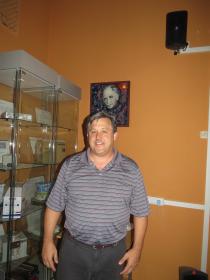On July 30 and 31 a meeting with NASA scientists took place in SINP. It was a sequel of a dialog, started last year .
The objective of the meeting was a discussion of radiation safety of the crews of spacecrafts during the missions to the Moon and the Mars and the development of a single standard of the radiation doses for the cosmonauts. Scientists from SINP MSU, Roscosmos, Institute of Nuclear Research, Institute of Medical and Biological Problems RAS, IZMIRAN, Central Institute of Machine Engineering and NASA (NASA's Johnson Space Center, R&D Center in Langley).
Edward Simone from NASA's Space Center told to our correspondent: "We got recommendations from our National Academy of Sciences in order to develop a single standard on radiation safety. It will provide us an opportunity to develop the program of beyond the Earth orbit flights after 2020".
Currently the Russian standard on the total radiation dose during the cosmonaut's life differs from the American one. "Concerning the flights our and American standards are the same: month dose is less 25 centizivert, year dose - not more than 50. We have discrepancy in the radiation risks during all life of the cosmonaut. The American standards accept canceration, while ours do not accept it. We even take into account the risk of blood circulatory system's desease. Our standard on the crystalline lens is twice lower than American one: our limit is 2 centizivert, American - 4. We isnist that it is impossible to accept 4 centiziverts, because the risk of cataract increses greatly," - Dr. Alexander Shafirkin from the Institute of Medical and Biological Problems RAS told us.
Besides, NASA specialists underestimate the influence of the radiation during the solar flares, but they are ready to compare the American and Russian models of the solar radiation events and doses which the cosmonauts will get during the missions to the Moon and the Mars. A total database of these events will be developed.
"First of all we have to decide how we'll determine the events. Then we can analyze the events and fill the database," - Dan Fry from NASA's Johnson Space Center told us.
"The Americans consider a solar event as solar particles flux observed near the Earth, while we consider it as a solar flare and accelerated particles produced by it," - Rikho Nymmik explained.
As Edward Simone told, NASA wishes to cooperate with scientists from Russia in order to unite two different approaches to the evaluation of the crew's radiation safety - American and Russian - and to develop a single standard of radiation doses for the cosmonauts during interplanetary missions.

